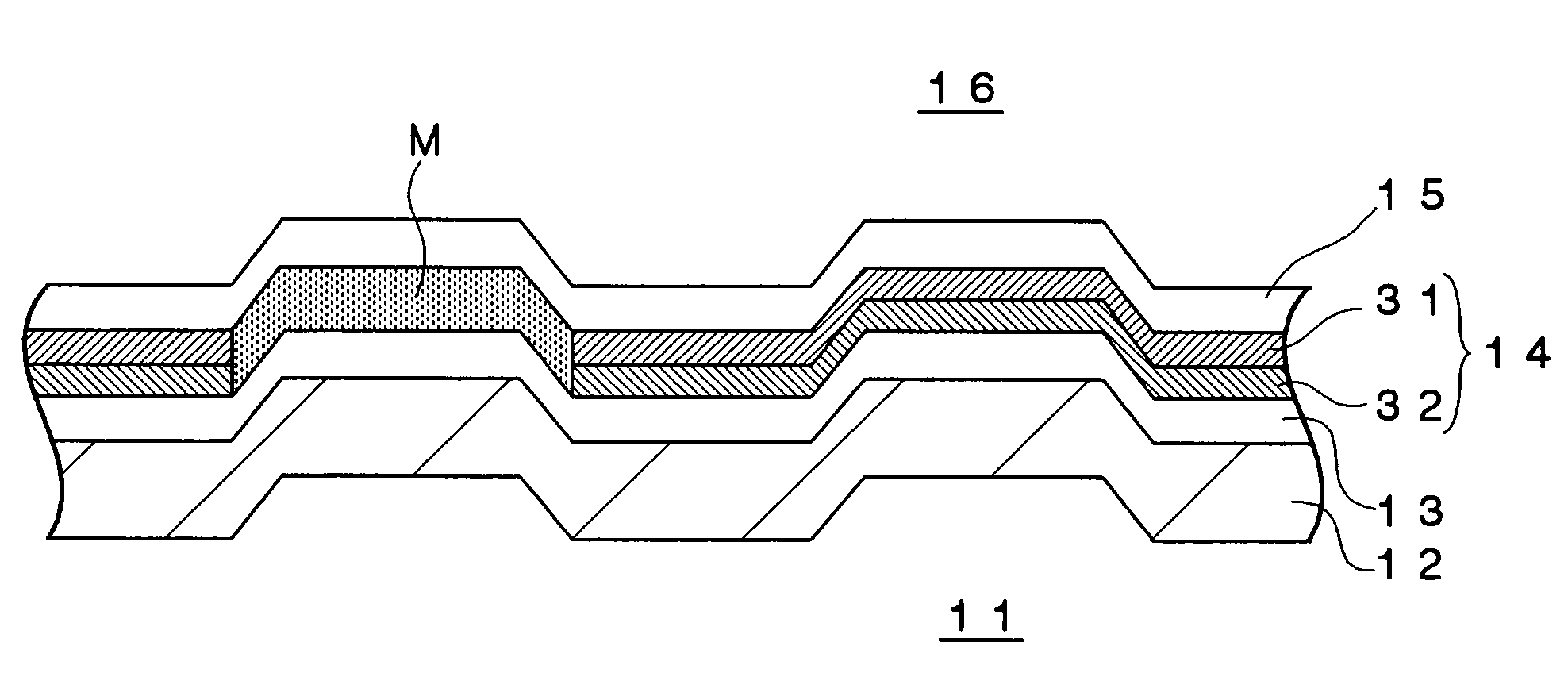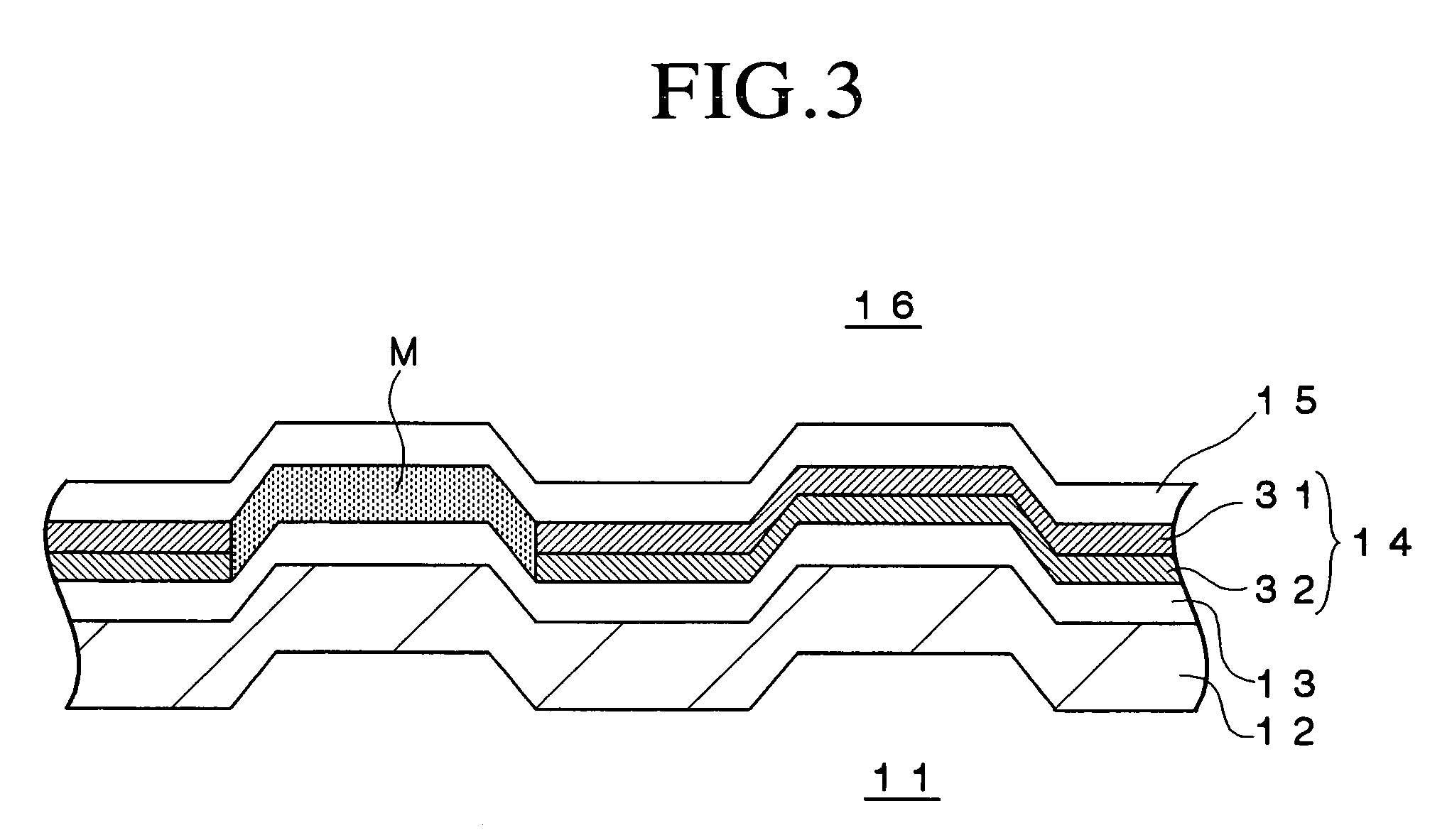Optical recording medium
a recording medium and optical recording technology, applied in the field of optical recording mediums, can solve the problems of difficult to store initial recording data, poor initial recording characteristic, and inability to erase and rewrite data recorded in a write-once type of optical recording medium, and achieve the effect of excellent initial recording characteristic and good storage condition of recorded data
- Summary
- Abstract
- Description
- Claims
- Application Information
AI Technical Summary
Benefits of technology
Problems solved by technology
Method used
Image
Examples
working example 1
[0158]An optical recording medium sample #1 was fabricated in the following manner.
[0159]A disk-like polycarbonate substrate having a thickness of 1.1 mm and a diameter of 120 mm and formed with grooves and lands on the surface thereof was first fabricated by an injection molding process.
[0160]Then, the polycarbonate substrate was set on a sputtering apparatus and a reflective layer consisting of an alloy of Ag, Pd and Cu and having a thickness of 100 nm, a second dielectric layer containing a mixture of ZnS and SiO2 and having a thickness of 26 nm, a second recording film containing Ti as a primary component and 43 atomic % of Al as an additive and having a thickness of 5 nm, a first recording film containing Si as a primary component and having a thickness of 5 nm and a first dielectric film containing TiO2 and having a thickness of 30 nm were sequentially formed on the surface of the polycarbonate substrate on which the grooves and lands were formed, using the sputtering process....
working example 2
[0176]An optical recording medium sample #1-1 was fabricated in the following manner.
[0177]A disk-like polycarbonate substrate having a thickness of 1.1 mm and a diameter of 120 mm and formed with grooves and lands on the surface thereof was first fabricated by an injection molding process.
[0178]Then, the polycarbonate substrate was set on a sputtering apparatus and a second dielectric layer containing a mixture of ZnS and SiO2 and having a thickness of 25 nm, a second recording film containing Ti as a primary component and having a thickness of 5 nm, a first recording film containing Si as a primary component and having a thickness of 4 nm and a first dielectric film containing TiO2 and having a thickness of 33 nm were sequentially formed on the surface of the polycarbonate substrate on which the grooves and lands were formed, using the sputtering process.
[0179]The mole ratio of ZnS to SiO2 in the mixture of ZnS and SiO2 contained in the second dielectric layer was 80:20.
[0180]Furt...
PUM
| Property | Measurement | Unit |
|---|---|---|
| thickness | aaaaa | aaaaa |
| wavelength | aaaaa | aaaaa |
| thickness | aaaaa | aaaaa |
Abstract
Description
Claims
Application Information
 Login to View More
Login to View More - R&D
- Intellectual Property
- Life Sciences
- Materials
- Tech Scout
- Unparalleled Data Quality
- Higher Quality Content
- 60% Fewer Hallucinations
Browse by: Latest US Patents, China's latest patents, Technical Efficacy Thesaurus, Application Domain, Technology Topic, Popular Technical Reports.
© 2025 PatSnap. All rights reserved.Legal|Privacy policy|Modern Slavery Act Transparency Statement|Sitemap|About US| Contact US: help@patsnap.com



